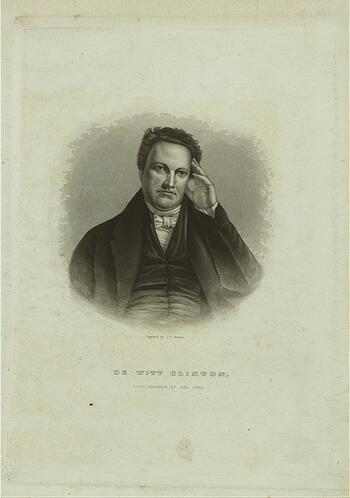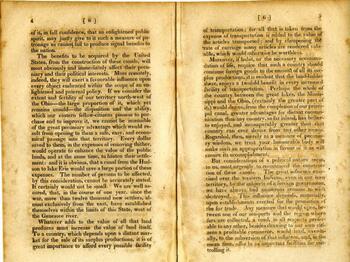Hawley’s essays were gaining public attention just as business and political leaders were considering “internal improvements” to bolster both state and national economies weakened during the American Revolution. In 1808, Assemblyman Joshua Forman was the first to submit legislation in the state government, calling for surveys to examine a water route between Lake Erie and the Hudson River. On March 13, 1810, the State Senate passed a measure establishing a Canal Commission and directing its commissioners to explore and propose a route for a canal connecting the Hudson River to the Great Lakes. Though the War of 1812 would cause a temporary delay in moving the project forward, the conflict itself underscored the need for inland transportation networks to protect American interests.
In 1817, DeWitt Clinton was elected governor of New York, running on a pro-canal platform. In April, the project was approved for funding in the legislature. Clinton's political fortunes rose and fell with the popularity of the canal project, often referred to as “Clinton’s Big Ditch” or “Clinton’s Folly” by his adversaries. Voted out of office in 1822, he was re-elected as governor in time to preside over the Erie Canal's opening ceremonies in October 1825.
Before becoming Governor of New York in 1817 and then again in 1825, DeWitt Clinton was a candidate for the American presidency in the election of 1812, challenging incumbent James Madison. Courtesy of The New York Public Library.
Memorial of the Commissioners of the State of New-York, in behalf of said state; praying the aid of the general government in opening a communication between the navigable waters of the Hudson River and the Lakes. December 11, 1816. Referred to the Committee on so much of the president’s message as relates to roads and canals.

